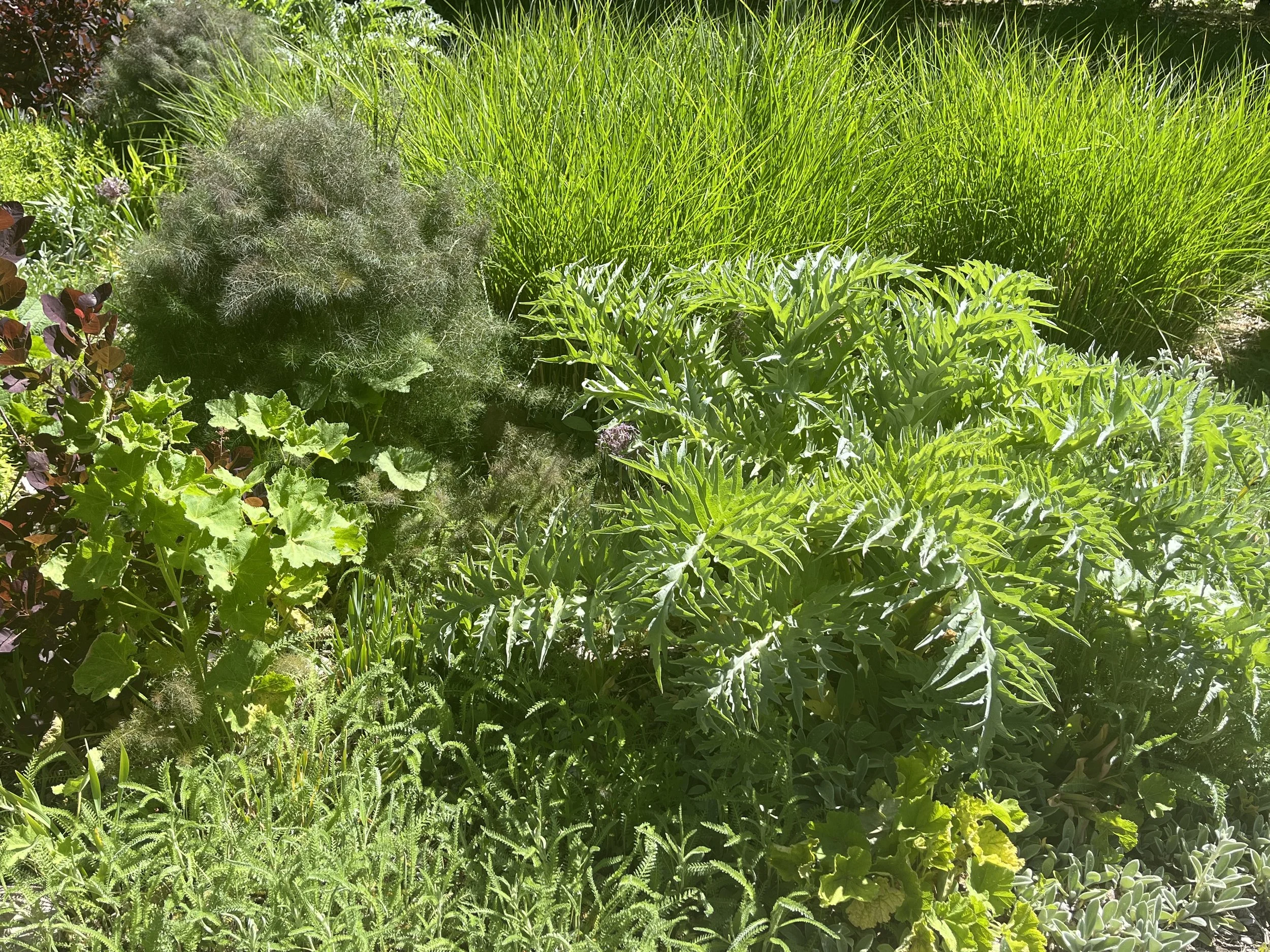This year I will be harvesting fennel pollen for the first time. I’ve worked with the common fennel plant, Foeniculum vulgare, in one particular garden for many years, but only just learned that its pollen can be used as a spice described as unique, delicate, and complex. This would add to an already fine list of benefits from one easily grown plant.
In a garden project ongoing for 25 years, common fennel, typically grown as an ornamental, actually proved itself to be a very helpful ‘pioneer’ species on a formerly hard-packed parking lot that also happens to be perched upon a high water table which happens to result in high soil salt concentrations. Where many other plants languished, or just disappeared, common fennel reliably swelled into gorgeous masses of fine textured foliage year after year.
In the garden, fennel is tough, low maintenance, and attracts a lot of pollinators. By midsummer, it develops deep yellow flower clusters that feed black swallowtail butterflies, wild bees, and also dragonflies that hover in the foliage in pursuit of other bugs. It’s also been a great companion and textural compliment to Cardoon, another big ornamental plant with a ton of presence.
Unfortunately, it also the case that common fennel is now classified as an invasive species in some parts of the U.S. From the look of things, there are now people around the country happily harvesting pollen from invasive 'wild' patches knowing they are simultaneously reducing its reproductive potential and making good money ($20-$40 or more per oz.).
So, should you actually plant it?
As I have seen potentially invasive plants become definitely invasive plants in New Mexico (ex., fancy ravennagrass plumes can now be seen plainly alongside New Mexico roadsides) I’d say in all painful honesty, that planting common fennel is actually a little 'iffy' due to its very tough and adaptable nature beyond the boundaries of the garden; however, it is possible that another variety of fennel, Foeniculum vulgare var. azoricum, or florence fennel, which has not demonstrated invasive tendencies in the U.S., could safely replace common fennel in the garden. As with common fennel, all parts of florence fennel are edible, and their pollen flavors are said to be the same. The primary difference is the edible bulb that forms at the base of florence fennel.
I will be testing this coming growing season to see what it brings.
